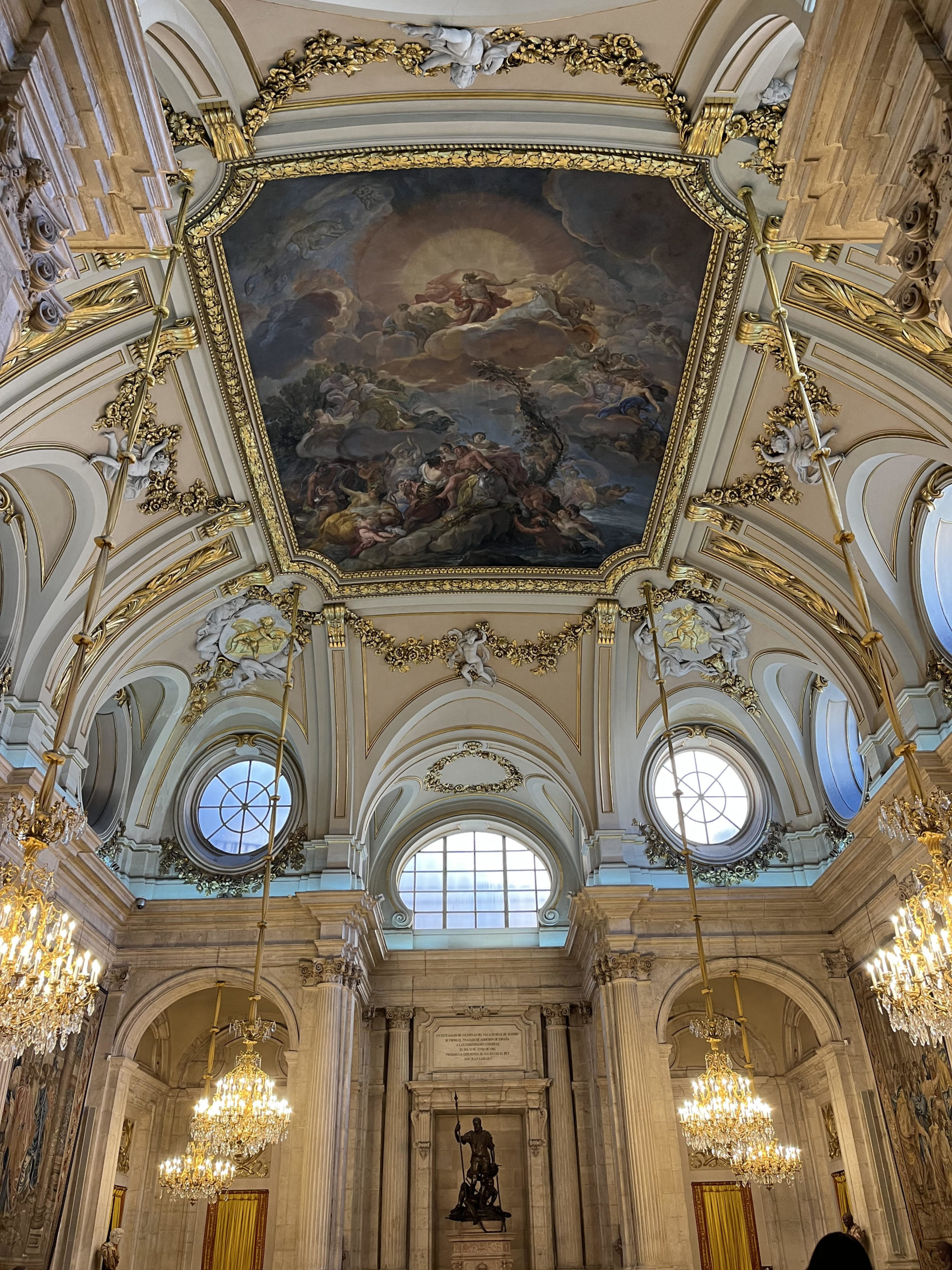
Visiting The Past
One of my favorite classes so far that I’m taking during my exchange program is my Spanish Culture and History class. Although it has barely begun, I have already learned so much about the rich past of Spain and how it came to be. One of the most interesting lessons that we went over in the past week was about the royal family. We learned about how religion came to unify Spain through the decision made by Queen Isabella alongside King Ferdinand. They were known as the Catholic Monarchs. Together they spread Catholicism by sponsoring voyages to the “New World” and heavily encouraged priests to go along these ventures. Spain essentially was seen as a powerful force during the Imperialist period and they had accumulated much wealth and gold. Learning about this history inspired me to want to see the legacy of the royal family.
This week I was able to make some time to see the Royal Palace of Madrid, which was one of the most beautiful architectural structures I have ever seen in my life. It was absolutely stunning from the outside, but what was inside I could have never imagined. Each wall was covered with intricate art and gold that came from the Americas. Every single room that I walked into had a different theme and seemed to be decorated with the most amount of attention to detail. Additionally it was so interesting to see all of the Catholic and religious art on the ceilings of the palace because I recognized most of it from my Spanish Culture and History class. I was also able to identify portraits of Isabella and Ferdinand, however I later learned that they never got to see the palace in its entirety. Lastly, the final rooms were some of the most eye opening about the types of tactics the Spanish monarchs used to keep control of the population during the time period. Right before the throne room where commoners had the ability to have an “Audience” with the King and Queen, were waiting rooms with art that I did not expect from the royal family. There wasn’t art of important figures nor of the rich noble men, but it was art that depicted regular people. Not only were these portraits of commoners, but they were portraying everyday life and the jobs/activities that most people partook in. I later learned that it was to make the commoners feel that the royal family respected their “work” and cared for their existence. It was one of many subtle ways of keeping regular people from demonstrating against the power of the monarchy.
As my Spanish Culture and History class continues to go more in depth about Spain, I hope to continue to tie in what I learn in class to a real life historical landmark. I’m interested in making more connections and trying to understand the complexity of the country’s history as it ties into what it has become today.

